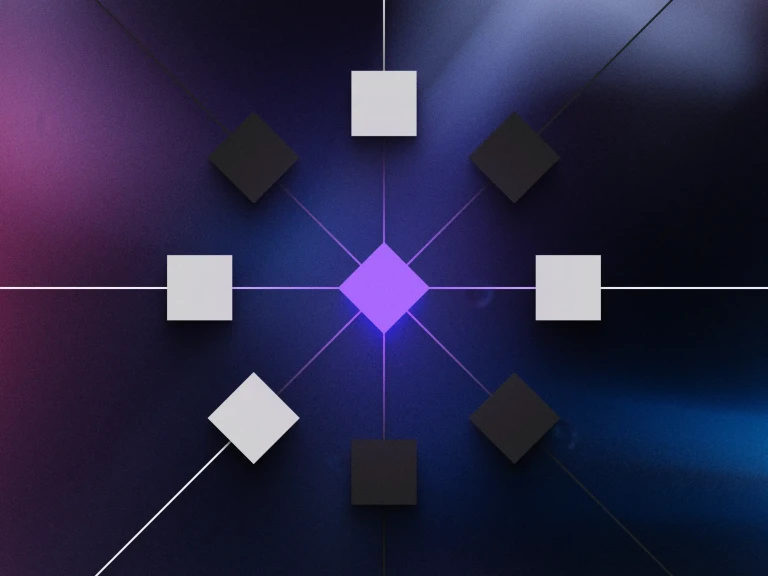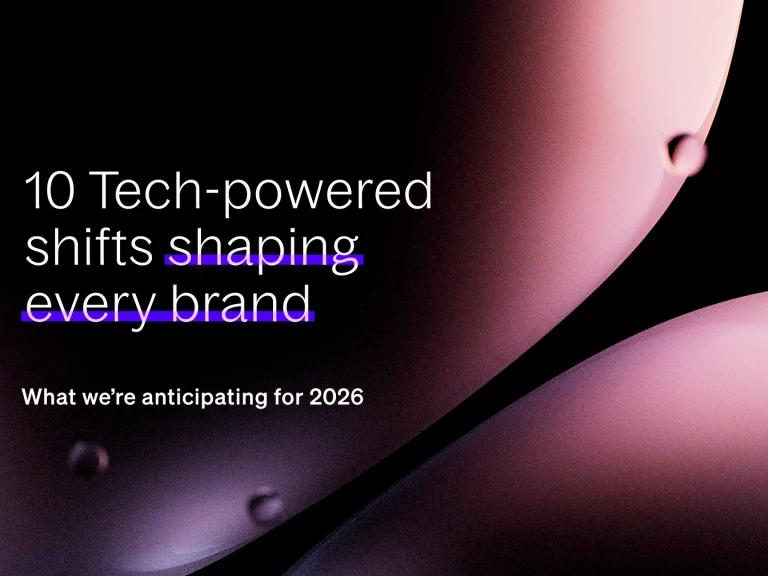In today's hyper-saturated digital landscape, where the average attention span has dropped to just 8 seconds, brands are in a constant race to capture and retain consumer focus. This environment demands that brands adopt a dynamic approach to consumer engagement. One of the most effective ways to achieve this is through motion design. Motion not only brings digital assets to life but also creates deeper, more emotional connections with users.
The Shift from Static to Dynamic Brand Identities
Brand identity consists of the visual, verbal and visceral elements that help distinguish a brand from its competitors. Static visual identity elements alone can be quickly overlooked in a digital space unless they are accompanied by motion or animation.
Motion design, also referred to as "kinetic branding," involves adding movement to brand elements such as logos, website visuals, and app interfaces. This movement can convey emotion, reinforce brand personality, and create more immersive user experiences.
Netflix’s intro annimation is a great example of how motion has been used to create a memorable brand signature. The animated lines bring the logo to life and also represent the streaming service’s fluid and dynamic nature.
The Power of Motion in Building Brand Associations
Motion design taps into sensory marketing by adding visual engagement that deepens consumer associations with a brand. Interactive and animated elements increase user engagement, foster emotional connections, and help brands create unique associations in consumers' minds.
Animated elements attract more attention compared to static visuals, and when aligned with a brand's messaging have a long-term impact on brand perception. Research by Roto et al. highlights that interaction aesthetics—how a user interacts with a brand’s digital elements—can communicate core brand values such as trust, innovation, or excitement, which further reinforce brand identity.
In a digital ecosystem where attention is fleeting, brands need to create experiences that stand out. Motion design offers a way to not only capture attention but also guide users through a brand story, deepening their connection with the brand.
Interactive design with well-integrated motion creates immersive experiences that elevate brand engagement. This is particularly true when motion design is used in combination with web interactivity, guiding users through an emotional journey that reinforces the brand’s identity.
Emerging technologies like haptic feedback add another sensory layer to motion design. Although haptics is still in its early stages, studies by Hadi suggest that tactile elements can enhance the sense of presence and deepen user interaction, which has implications for how brands might use both motion and touch to build stronger digital identities.
As technology continues to advance, brands will need to embrace more sophisticated uses of motion design to stay competitive. Emerging technologies such as augmented reality (AR), virtual reality (VR), and even AI-driven design will offer new ways for brands to express their identity in dynamic, multi-sensory environments.
Building dynamic brand systems
Static brand systems do not suffice in a world where digital interaction is fluid, dynamic, and continuously evolving. Motion is more than just an aesthetic choice—it’s a key tool for communicating brand identity. Our design systems incorporate motion from the very start, ensuring that every element, from logo animations to button interactions, contributes to a cohesive brand story.
By embedding motion at the core of our brand executions, we ensure that our clients' brands remain dynamic and memorable across all touchpoints.
A Holistic, Multi-Sensory Approach
Our design philosophy is grounded in the idea that motion design can bridge the gap between visual and emotional brand expression. Motion should be functional and emotionally resonant. This involves:
Micro-interactions: These small, purposeful animations guide user behavior and subtly communicate brand values, enhancing the user experience while maintaining consistency with the brand's identity.
Fluid Navigation: Our digital systems are designed to make navigation feel effortless, using motion to enhance user journeys. Transitions between pages or actions are carefully crafted to communicate fluidity, aligning with the brand’s values of ease and innovation.
Motion as Part of the Brand Story
Every movement, every animation, should play a part in the brand’s story. It’s not motion for motions sake—it is about communicating meaning. Whether it’s a logo that animates in a way that mirrors the brand’s personality, or a button that reacts in a unique, brand-specific way when clicked, motion design brings the brand to life, making it more relatable, memorable, and human-centric.
A Living Brand System for the Future
Juicebox’s digital design systems are designed to evolve with the brand. Our systems don’t just react to current trends; they anticipate future digital needs, ensuring that the brands we work with remain ahead of the curve. With advances in AI, machine learning, and real-time data, our living systems continuously optimize the user experience while maintaining the brand’s core identity.
This holistic, motion-driven approach to digital design is not only future-proof but sets the foundation for brands to establish deep, lasting connections with their audiences, both now and in the years to come.










